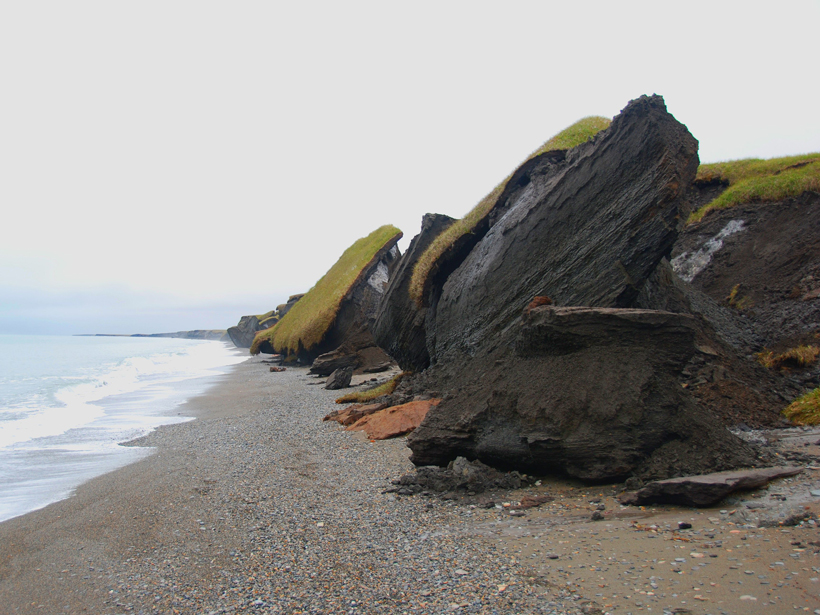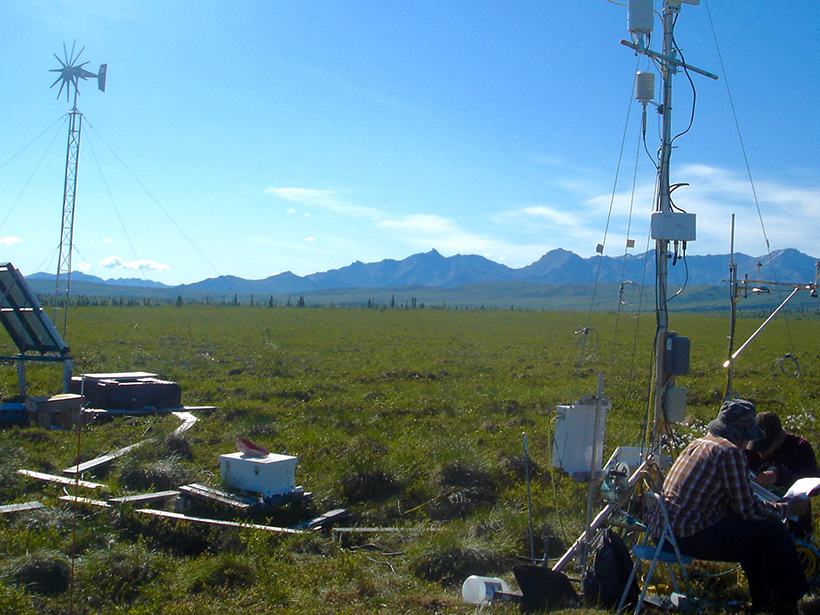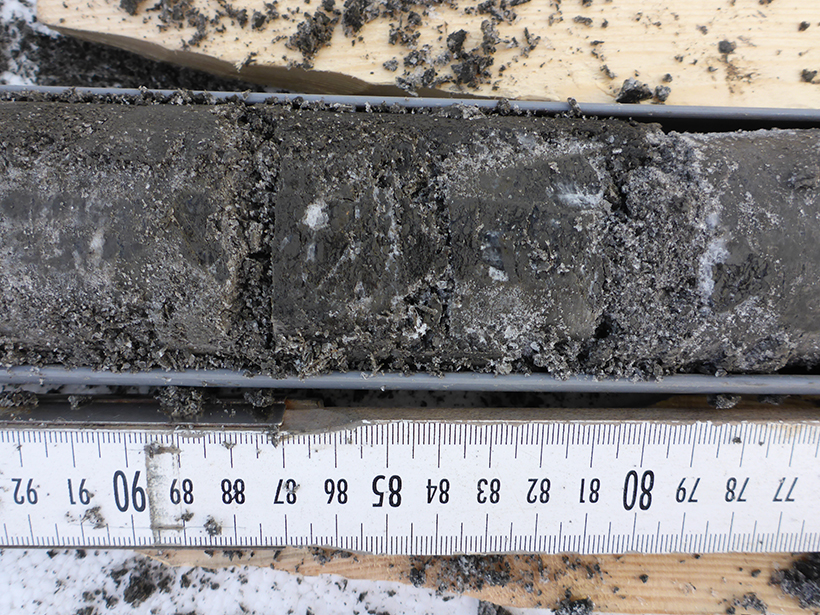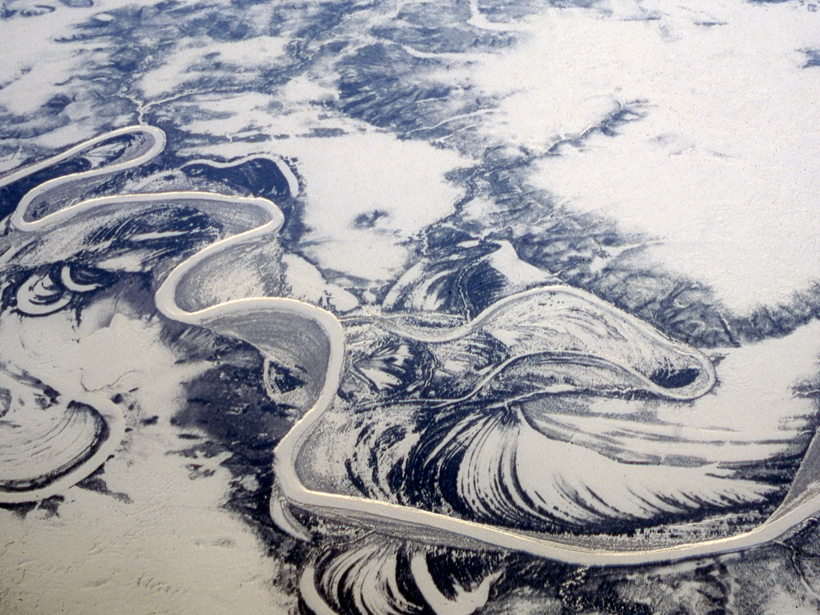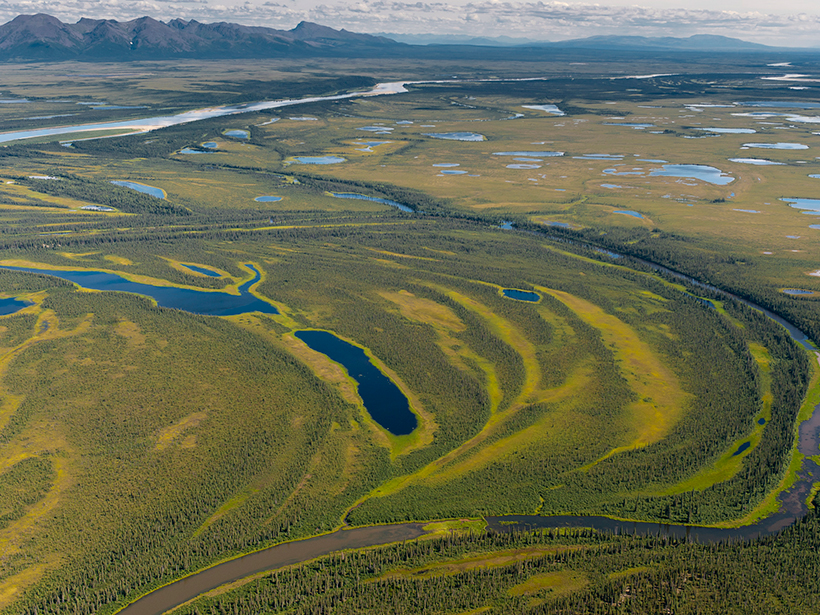Physical parameters may help scientists extrapolate Arctic carbon soil losses from the local to the regional scale, according to the results of a yearlong incubation experiment.
permafrost
Carbon Release from Permafrost Erosion Along the Yukon Coast
New findings highlight the need to account for large amounts of ground ice contained in frozen soil when assessing Arctic carbon cycling.
Understanding High-Latitude Methane in a Warming Climate
Climate change could spur greenhouse gas release from the Arctic. A new project will synthesize existing data to improve uncertain predictions.
Airborne Surveys Examine Water Levels of Lakes Perched on Permafrost
Do water levels in high-latitude Canadian lakes fluctuate as one body or as separate entities? The answer could reveal clues to how melting permafrost influences the environment.
Searching for Organic Carbon in the Dry Valleys of Antarctica
Researchers identify the first evidence of microbial respiration in desiccated Antarctic permafrost soils.
Microbes May Thrive in Subsea Permafrost Long After Flooding
Two cores from the East Siberian Arctic Shelf reveal how microbial communities develop over thousands of years as submarine permafrost slowly thaws.
Engineering New Foundations for a Thawing Arctic
Researchers experiment with new building supports to prepare the Arctic for rapid shifts in permafrost and ground stability.
Greenland Fires Ignite Climate Change Fears
The fires are stoking worries about the vast island’s thawing permafrost.
Climate Change Could Make Siberia an Attractive Place to Live
Although anticipated warmer temperatures promise to render the region more comfortable for people, the transformation might turn permafrost areas into inhospitable bogs.
Resolving a Methane Mystery in the Arctic
International Workshop to Reconcile Methane Budgets in the Northern Permafrost Region; Seattle, Washington, 7–9 March 2017

